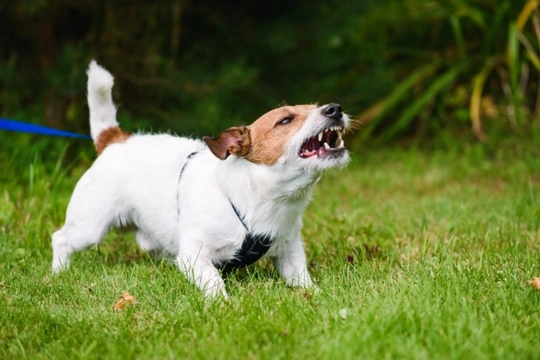
What can you do if your dog can be unpredictable and aggressive with others?
If you are thinking of taking on a dog that is unpredictable or even aggressive or if your own dog’s behaviour is already a problem, you have a heavy weight on your shoulders, and you should think really carefully about the implications of this and if you can manage it.
This article will share tips on some of the basics required to manage and moderate the behaviour of an unpredictable or aggressive dog. Read on to learn more.
Work to socialise them
Dogs that are aggressive or unpredictable with either other dogs or with people are not generally well socialised; those that are don’t tend to become unpredictable, and those that are unpredictable tend to not be able to socialise due to the added risks.
Dogs that have been socialised properly from a young age and that have maintained social interactions don’t develop aggression problems without cause (like themselves being attacked by an aggressive dog) and dogs that are a problem may never have learned appropriate social behaviour and signals.
Socialising a dog that’s aggressive or unpredictable needs to be managed really carefully; this is integral to achieving improvement, and needs to be achieved without endangering other dogs or people.
This is something that you really do need to hire a professional to help with if you’re not highly experienced in dealing with such challenges already, as there are a great many variables involved as well as of course risks. The type of dogs that can be roped in to help to teach an unpredictable dog good social skills are very unique as well; and naturally you need to be sure that contact with your dog won’t be dangerous for the other party, nor result in causing them problems later on themselves due to having had a negative experience.
Progressive exposure to triggers and stimulus
Most dogs that are aggressive or unpredictable have certain triggers that cause or exacerbate such behaviours. You might not know what caused these triggers to develop, but when you know what they are, you can work on them.
Over time, you will need to work very gradually to expose your dog to the sources of their triggers at a progressive rate; beginning with very distant and brief exposure repeatedly until your dog fails to react to it, then moving on in stages and increments, each of which are likely to be really tiny; such as one step closer from a distance of several hundred feet even!
Positive reinforcement
Telling off a dog that is already het up and in full-on danger mode doesn’t only not help, but actually worsens things. Dogs react aggressively because of an underlying fear; aggression is a fear-based emotion. If you then tell your dog off, punish them, or shout or otherwise get het up, you’re simply adding to the negative stimulus your dog is reacting to, and are apt to worsen their responses.
Focus instead on calmly diverting their behaviour and responding only to positive progress (even if this progress is as small as finally being able to catch your dog’s attention well enough when they’re reacting that they glance your way) with lots of praise and rewards.
Control and safety
As well as the work you put in to improve your dog’s behaviour, you have a legal and moral obligation to keep other people and dogs safe, and this means never taking risks.
When in any situation where others are present or places other people and dogs can go, your dog must be on a lead and under your proper control and if necessary, muzzled too.
If you’re in a dog park or other public area, this is vital at all times; even if no other dogs or people are present, as they might arrive at any moment with no warning.
Being alert and predicting problems
Finally, managing and improving the behaviour of an aggressive or unpredictable dog means planning and working progressively, and exerting a high level of control over what you expose your dog to, when, and how you manage their reactions.
You cannot control all external situations (like another dog being off the lead and coming too close to yours) but by being alert and ready to act at all times, you can manage the situation as best as possible, mitigate it, and direct your own dog. If you spot the off-lead dog early, you can call to ask their owner to recall it and begin your process to handle your own dog, before it all happens so quickly that an issue arises.
In a perfect world of course, a situation like this in which another dog owner permits their dog to run at yours when yours is on the lead would not arise; but unfortunately we don’t live in a perfect world.
Do what you can as well to let other dog owners know if you need space or that your dog is not social or friendly, such as by using a yellow bandana and wording asking for distance, and speaking to dog owners you see regularly about your dog’s challenges and what would help.



